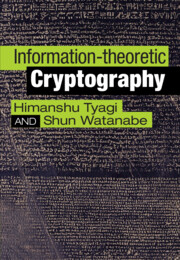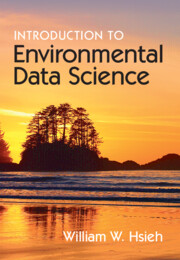Refine search
Actions for selected content:
48284 results in Computer Science
6 - The Privacy Phoenix
- from Part II - Who Are the Choice-Makers?
-
- Book:
- Unwired
- Published online:
- 29 April 2023
- Print publication:
- 28 March 2023, pp 80-94
-
- Chapter
- Export citation
12 - Acupuncture for Change
- from Part III - Fighting for Choice
-
- Book:
- Unwired
- Published online:
- 29 April 2023
- Print publication:
- 28 March 2023, pp 164-176
-
- Chapter
- Export citation
10 - The Ground Is Burning
- from Part III - Fighting for Choice
-
- Book:
- Unwired
- Published online:
- 29 April 2023
- Print publication:
- 28 March 2023, pp 135-147
-
- Chapter
- Export citation
5 - The Food Wars
- from Part II - Who Are the Choice-Makers?
-
- Book:
- Unwired
- Published online:
- 29 April 2023
- Print publication:
- 28 March 2023, pp 62-79
-
- Chapter
- Export citation
An EEG-based method to decode cognitive factors in creative processes
-
- Article
-
- You have access
- Open access
- HTML
- Export citation
Responding to the coronavirus disease-2019 pandemic with innovative data use: The role of data challenges
-
- Journal:
- Data & Policy / Volume 5 / 2023
- Published online by Cambridge University Press:
- 27 March 2023, e11
-
- Article
-
- You have access
- Open access
- HTML
- Export citation
Local Yoneda completions of quasi-metric spaces
-
- Journal:
- Mathematical Structures in Computer Science / Volume 33 / Issue 1 / January 2023
- Published online by Cambridge University Press:
- 24 March 2023, pp. 33-45
-
- Article
- Export citation
A network-based discrete choice model for decision-based design
-
- Journal:
- Design Science / Volume 9 / 2023
- Published online by Cambridge University Press:
- 24 March 2023, e7
-
- Article
-
- You have access
- Open access
- HTML
- Export citation

Information-theoretic Cryptography
-
- Published online:
- 23 March 2023
- Print publication:
- 13 April 2023

Introduction to Environmental Data Science
-
- Published online:
- 23 March 2023
- Print publication:
- 23 March 2023
17 - Merging of Machine Learning and Physics
-
- Book:
- Introduction to Environmental Data Science
- Published online:
- 23 March 2023
- Print publication:
- 23 March 2023, pp 549-568
-
- Chapter
- Export citation
8 - Learning and Generalization
-
- Book:
- Introduction to Environmental Data Science
- Published online:
- 23 March 2023
- Print publication:
- 23 March 2023, pp 245-282
-
- Chapter
- Export citation
13 - Kernel Methods
-
- Book:
- Introduction to Environmental Data Science
- Published online:
- 23 March 2023
- Print publication:
- 23 March 2023, pp 440-472
-
- Chapter
- Export citation
10 - Unsupervised Learning
-
- Book:
- Introduction to Environmental Data Science
- Published online:
- 23 March 2023
- Print publication:
- 23 March 2023, pp 330-371
-
- Chapter
- Export citation
15 - Deep Learning
-
- Book:
- Introduction to Environmental Data Science
- Published online:
- 23 March 2023
- Print publication:
- 23 March 2023, pp 494-517
-
- Chapter
- Export citation
9 - Principal Components and Canonical Correlation
-
- Book:
- Introduction to Environmental Data Science
- Published online:
- 23 March 2023
- Print publication:
- 23 March 2023, pp 283-329
-
- Chapter
- Export citation
16 - Forecast Verification and Post-processing
-
- Book:
- Introduction to Environmental Data Science
- Published online:
- 23 March 2023
- Print publication:
- 23 March 2023, pp 518-548
-
- Chapter
- Export citation
Index
-
- Book:
- Introduction to Environmental Data Science
- Published online:
- 23 March 2023
- Print publication:
- 23 March 2023, pp 613-628
-
- Chapter
- Export citation








